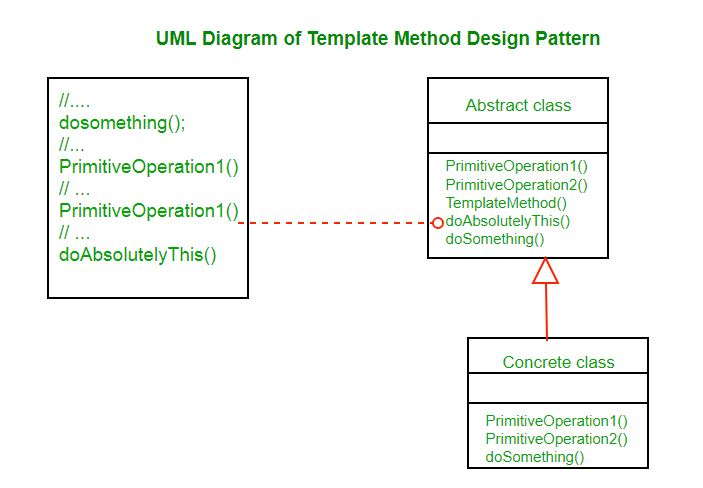Design Patterns(十二) Template Method
Template method design pattern is to define an algorithm as skeleton of operations and leave the details to be implemented by the child classes. The overall structure and sequence of the algorithm is preserved by the parent class.
前言 模板方法模式定义了一个算法的步骤,并允许子类别为一个或多个步骤提供其实践方式。让子类别在不改变算法架构的情况下,重新定义算法中的某些步骤。在软件工程中,它是一种软件设计模式,和C++模板没有关连。
模板方法模式 基本介绍:
1) 模板方法模式(Template Method Pattern),又叫模板模式(Template Pattern),在一个抽象类公开定义了执行它的方法的模板。它的子类可以按需要重写方法实现,但调用将以抽象类中定义的方式进行;
模板方法模式-UML图:
模板方法模式-类图:
代码:
1 2 3 4 5 6 7 8 9 10 11 12 13 14 15 16 17 18 19 20 21 22 23 24 25 26 27 28 29 30 31 32 33 34 35 36 37 38 39 40 41 42 43 44 45 46 47 48 49 50 51 52 53 54 55 56 57 58 59 60 61 62 63 64 65 66 67 68 69 70 71 72 73 74 75 76 77 78 79 80 81 82 83 84 85 86 87 public class TemplateMethod public static void main (String[] args) Game football = new Football("足球" ); Game basketball = new Basketball("篮球" ); football.play(); System.out.println("===========分割线===========" ); basketball.play(); } } abstract class Game String gameName; public Game (String gameName) this .gameName = gameName; } void warmup () System.out.println(gameName + "运动员热身" ); } void start () System.out.println(gameName + "比赛开始" ); } abstract void stop () void end () System.out.println(gameName + "比赛结束" ); } boolean isStop () return true ; } final void play () warmup(); start(); if (isStop()) { stop(); } end(); } } class Football extends Game public Football (String gameName) super (gameName); } @Override void stop () } @Override boolean isStop () return false ; } } class Basketball extends Game public Basketball (String gameName) super (gameName); } @Override void stop () System.out.println(super .gameName + "比赛可以暂停" ); } }
总结 模板方法模式的注意事项和细节:
1) 基本思想是: 算法只存在于一个地方,也就是在父类中,容易修改。需要修改算法时,只要修改父类的模板方法或者已经实现的某些步骤,子类就会继承这些修改;
延伸 模板方法模式 模板模式-菜鸟教程 Design Patterns - Template Pattern 模板方法模式(模板方法设计模式)详解 尚硅谷Java设计模式,韩顺平图解java设计模式
<
Design Patterns(十三) Command
Algorithm Shell Sort
>

